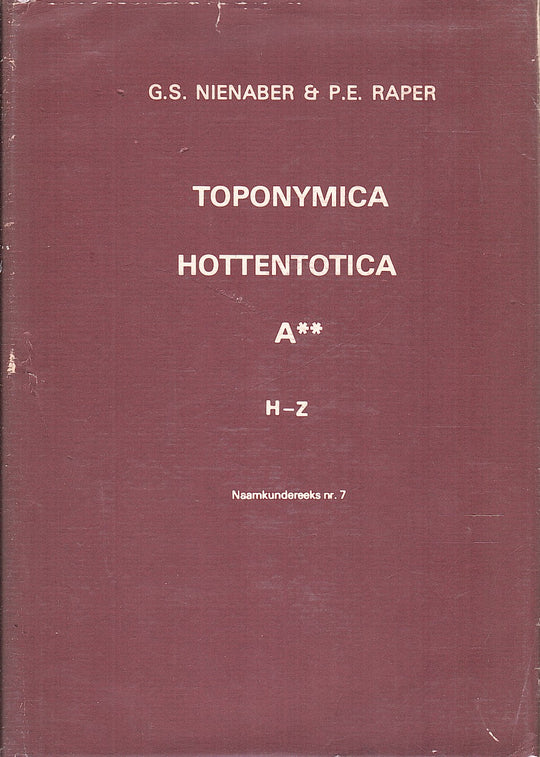eng
Alexander Je 1836-7 Kaart 'Sonuwap Hill' [Suidwes Van Keetmanshoop.] Knudsen 1842 Travel Moritz 29/4 141 '... after the source SO-'NOAB near Tibet's Square ...' [Volgen Sys Syssel Te Lees AS SO- ǀǀ NOB], Heidmann F 1869 Sources 21 48 'On Snake Head ...', Maar Kroenlein 1869 Sources 24 III 'SO- ǀǀ NOB (cutting trap), or how it is to name the handlers: Slangkop. .. ', EN OP Volgent Bladsy (24 112)' SO- ǀǀ NOB (cutting trap) does not mean the place itself, but the outside, well-educated Kegelberg, on whose foot he is, and the old Naman as' Fall 'with his' strap' had to be had to be. The fantasy of people painted the crown of the mountain as the lid of the trap and the hucks down in Zigzagform west hucks as the straps attached to it ... 'Hahn TH 1879 Kaart' SO- ǀǀ NOB 'OP 26 ° 44 ' 17 ° 43 ', UITSPANNING by Spruit Wes Van Slangkop. Ook Kaart van Kiepert 1893, EN by Sprigade-Moisel 1904 OP S 2617 DB 'Sonoab (snake head)', Bergnaam. Schultze 1904-5 Anuk 166 'SO- ǀǀ NOB, SLANGKOP. The etymology has remained uncertain. Loudly, the word components agree with SOB = lungs, and ǀǀ NOB = dwarching '. BUDACK KFR 1965 Study 234 'SO- ǀǀ NOB: 'Toetrekstrik'; so - toeslaan, toetrek (van 'n trapval of stel); ǀǀ NOB = mousetrap, fallstrick, fishing net, sling ... '
afr
Alexander JE 1836-7 Kaart 'Sonuwap Hill' [suidwes van Keetmanshoop.] Knudsen 1842 Reisen Moritz 29/4 141 '...nach der Quelle So-’Noab unweit von Tibets Platz...' [Volgens sy stelsel te lees as So-ǀǀNoab], Heidmann F 1869 Quellen 21 48 'Auf Schlangenkopf...', maar Kroenlein 1869 Quellen 24 III 'So-ǀǀnoab (Schneide-Falle), oder wie es die Handler zu nennen belieben: Slangkop...', en op volgende bladsy (24 112) 'So- ǀǀNoab (Schneide-Falle) heisst eigentlich nicht der Platz selbst, sondern der ausserst schone, wohlgebildete Kegelberg, an dessen Fuss er liegt, und den alten Naman als ‘Falle’ mit seinem ‘Riemen’ daran erschienen sein musste. Die Phantasie der leute malte sich die Krone des Berges als den Deckel der Falle aus und den sich in Zickzackform nach Westen herabziehenden Hucker als den daran befestigten Riemen...' Hahn Th 1879 kaart 'So-ǀǀNoab' op 26° 44' 17° 43', uitspanning by spruit wes van Slangkop. Ook kaart van Kiepert 1893, en by Sprigade-Moisel 1904 op S 2617 DB 'Sonoab (Schlangenkopf)', bergnaam. Schultze 1904-5 ANUK 166 'So-ǀǀnoab, Slangkop. Die Etymologie ist mir un- klar geblieben. lautlich stimmen die Wortbestandteile uberein mit sob = lunge, und ǀǀnoab = Zwerchfell'. Budack KFR 1965 Studie 234 'So-ǀǀnoab: ‘Toetrekstrik’; so - toeslaan, toetrek (van ’n trapval of stel); ǀǀnoab = Mausefalle, Fallstrick, Fangnetz, Schlinge...'




